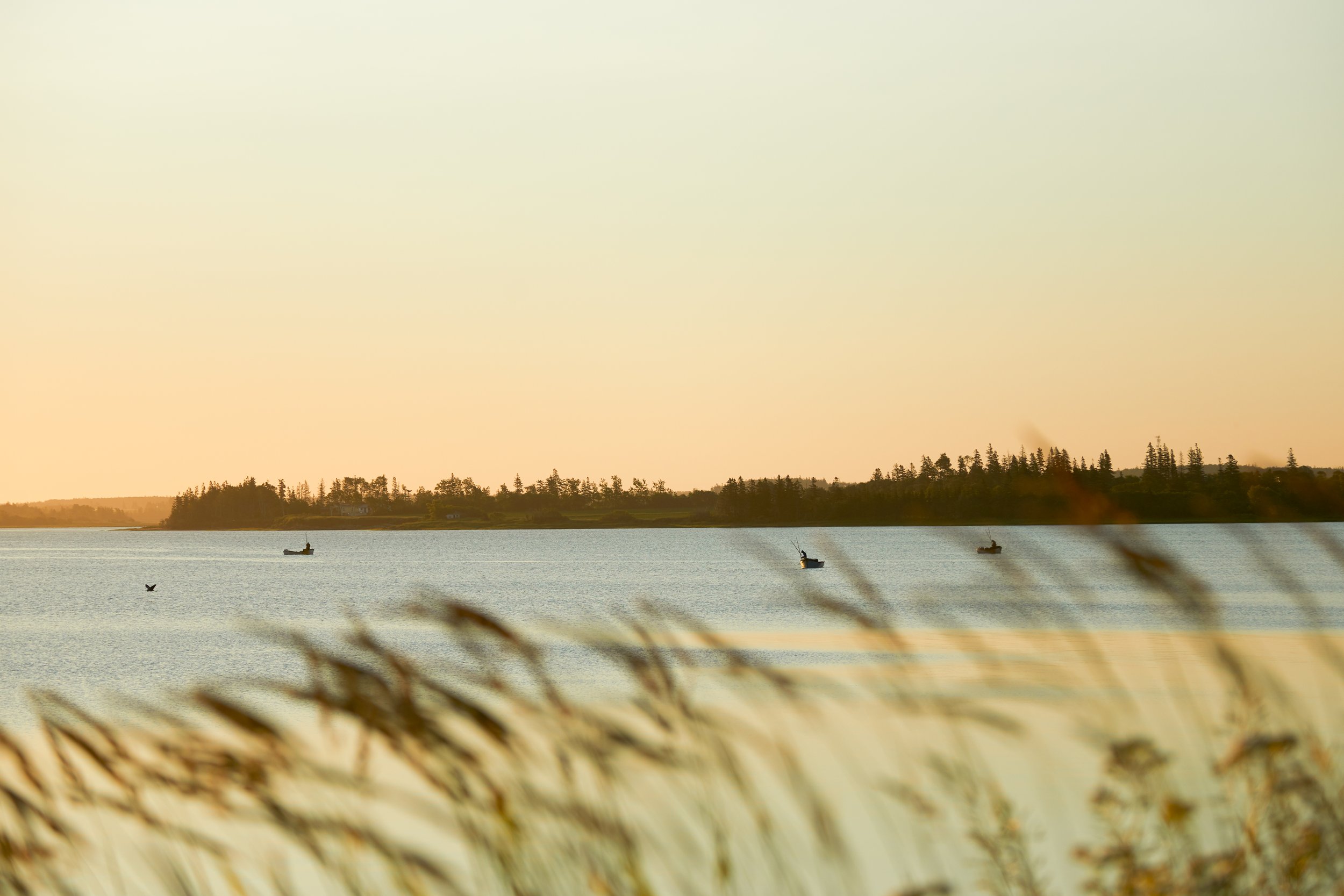
Wild by Choice.
Wild Oysters
The wild oyster fishery in Prince Edward Island dates back as far as the 1800’s.
The oysters are fished from the wild beds, using a 15-foot dory and a pair of long-handled oyster tongs that end in rake-like teeth. The depths of the water are up to 4.3 meters (14 feet). The fisher will lean over the side of the dory and drop the tongs into the water, closing them on the bottom of the bed to capture a small quantity of oysters and usually a bit of seagrass and mud. The fisher will then pull the closed tongs up through the water and deposit what they have gathered on the washboard of the dory so it can be measured and graded. All undersized oysters go back on the beds, as well as old shells that help to make a new environment for wild oysters to grow. Keeper oysters are cleaned off and sorted into wooden crates that will be sold to oyster processors and then the consumer. The oyster tongs are the only legal way for fishers to harvest wild oysters on commercial beds. The process is very labour intensive and slow. Each load may only collect a few oysters, requiring strength for repetition and a lot of patience. A wild oyster fisher will spend 8-10 hours out on the water everyday tonging and sorting.
PEI oysters grow slowly compared to many other foods. It takes 4 to 7 years for an oyster to mature and reach a minimum fishing size of 3 inches. Oysters like a hard bottom surface to grow on, the bigger they get, the more room they require to grow. It is said that the best oysters are the ones that get to grow slowly without crowding in cool clean waters.
Wild oysters are graded either choice, standard or commercial. This depends on the length and width of the shell. Although we grade the oyster by the shell, all meats taste the same.
Wild oysters literally taste like the sea and reflect the minerals, salinity and nutrients available in the water. Wild oysters are all of these things: They have a clean taste that reflects their environment, they are naturally grown and fished with minimal impact and of course they are delicious!
Oysters are natural and nutritious and are sometimes called nature’s multivitamin. Oysters are an excellent source of protein, low in calories and saturated fat, excellent source of iron, high in zinc, great sources of vitamin E, vitamin D, B12, magnesium, etc.
Quahaugs
Today, Prince Edward Island quahaugs are some of the highest quality shellfish available.
The quahaug industry is composed of two major components: commercial and recreational. Quahaugs are traditionally fished in Prince Edward Island at low tide by hand. In areas where beds are covered by several feet of water, either tongs or long-handled rakes are used from small boats. All fishing activity is regulated by a minimum legal size and the recreational fishing is also restricted to a personal daily bag limit and season.
Bar Clams
Bar clams are most abundant in the Canadian part of the range in the southern and western Gulf of St. Lawrence where they are commonly found on clean sandy bottoms at low tide levels. Bar clams can reach a length of 18cm, although the average size harvested in about 10cm.
Bar clams have a thick chalky shell covered with a thin, olive-brown skin.
On Prince Edward Island harvesting methods include commercial hydraulic, manual and recreational. The clam industry is currently regulated by season, gear type, and minimum size limits.
Soft Shell Clams
Soft shell clams are found on Prince Edward Island throughout bays and estuaries. In order to be harvested Prince Edward Island soft shell clams must at least 5 cm in size. On Prince Edward Island the clam industry has been around since at least the turn of the century. The soft shell clam industry is composed of two major components: commercial and recreational. Over the years, harvesting methods have changed very little. Harvesting is undertaken mainly through the use of clam hacks or forks at low tide. Commercially a mechanical harvester can be used however, manual harvesting accounts for the majority of the soft shell clam landings in the Gulf.



